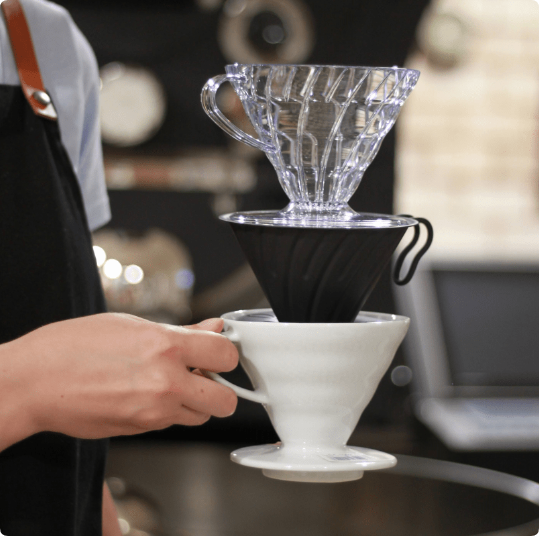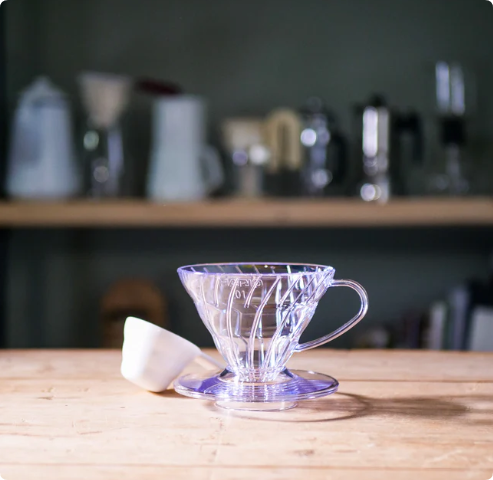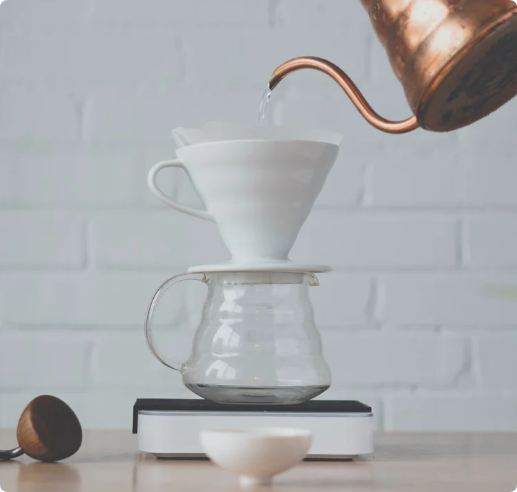In the world of coffee brewing, drippers play a pivotal role in extracting the perfect cup. For B2B purchasers, whether sourcing for large supermarkets or small-scale boutique stores, selecting the right material for a coffee dripper can be a crucial decision. Two of the most popular materials for coffee drippers are plastic and ceramic. This blog delves deep into the differences between these two materials to help businesses make an informed decision when purchasing coffee drippers in bulk.
Understanding Coffee Drippers
Coffee drippers, also known as pour-over brewers, are a staple for coffee lovers who prefer manual brewing methods. These tools allow users to control water flow and extraction time, resulting in a tailored coffee experience. The material of the dripper significantly impacts the brewing process, influencing factors such as heat retention, durability, and flavor extraction.

Overview of EKA Ceramic
EKA Ceramic is a global leader in the production of high-quality ceramic products, including coffee drippers. With decades of experience, EKA offers both ODM (Original Design Manufacturing) services for large-scale retailers and OEM (Original Equipment Manufacturing) services for smaller batch orders. EKA Ceramic products are designed with both functionality and aesthetics in mind, ensuring high performance in various market segments.
For B2B buyers, partnering with EKA offers the advantage of customization, allowing businesses to cater to specific consumer needs, from minimalist designs for boutique coffee shops to durable, mass-produced models for larger retailers.
Key Differences Between Plastic and Ceramic Coffee Drippers
| Aspect | Plastic Coffee Dripper | Ceramic Coffee Dripper |
|---|---|---|
| Material Composition | Made from BPA-free plastic, lightweight | Crafted from high-quality ceramic clay, heavier and more robust |
| Durability | Highly durable, resistant to drops and wear | Durable but prone to chipping or breaking if mishandled |
| Heat Retention | Low heat retention, coffee cools faster | Excellent heat retention, maintains a steady temperature |
| Taste Impact | May impart a slight plastic flavor if not cleaned properly | Preserves the natural flavors of the coffee without any interference |
| Aesthetic Appeal | Basic design options, often less visually appealing | Stylish and elegant, available in various designs and colors |
| Cost Efficiency | Generally lower cost, suitable for budget-conscious buyers | Higher cost but offers a premium feel |
| Environmental Impact | Non-biodegradable, but some models are recyclable | Environmentally friendly, biodegradable over time |
| Customization Options | Easier to mold into different shapes and designs for branding | More limited in design flexibility but can be customized with glazing and patterns |
| Weight | Extremely lightweight, ideal for travel | Heavier, more suited for home or café settings |
1. Material Composition
Plastic coffee drippers are usually made from food-grade plastic that is BPA-free and durable. This makes them a practical choice for businesses looking for cost-effective, long-lasting products. Their lightweight nature and resistance to wear and tear make plastic drippers suitable for on-the-go coffee drinkers or outdoor enthusiasts. They can also be easily molded into different shapes, allowing for various design choices.

In contrast, ceramic coffee drippers are made from high-quality ceramic clay, offering a more premium and elegant product. The material adds a significant weight and robustness, but at the cost of being more fragile. Ceramic coffee drippers are often seen as more sophisticated and are ideal for use in homes, cafés, or any setting where aesthetics play an important role.
2. Durability
When it comes to durability, plastic coffee drippers have the upper hand. They are highly resistant to drops and physical damage, making them ideal for environments where frequent handling or transportation is necessary. Their flexibility also makes them more forgiving in rough use, reducing the risk of breakage.
Ceramic coffee drippers, while durable in the sense that they can last for years if properly cared for, are more susceptible to chipping and breaking when dropped or mishandled. However, for businesses that prioritize quality and appearance, ceramic drippers remain a top choice despite their fragility.
3. Heat Retention
One of the critical factors in brewing a good cup of coffee is temperature consistency. Ceramic coffee drippers excel in this area, as they retain heat much better than plastic. This means that the coffee stays at an optimal brewing temperature throughout the extraction process, resulting in a richer and more balanced flavor profile.
On the other hand, plastic coffee drippers have poor heat retention, causing the coffee to cool faster. While this might not be a dealbreaker for some consumers, businesses catering to high-end coffee shops or aficionados may want to consider the heat retention benefits of ceramic drippers.
4. Taste Impact
Plastic drippers, even those made from high-quality, food-grade materials, can sometimes impart a slight plastic flavor, especially if not cleaned properly. This can detract from the overall coffee experience, particularly for those with more refined tastes.
Ceramic drippers, in contrast, do not alter the flavor of the coffee. The ceramic material preserves the natural taste of the beans, ensuring that the final brew is as close to the intended flavor as possible. For businesses targeting premium coffee markets, ceramic drippers are often the preferred choice.
5. Aesthetic Appeal
When it comes to aesthetics, ceramic drippers are undeniably more visually appealing. They can be glazed in various colors and patterns, adding a touch of sophistication to any kitchen or café. Many consumers view ceramic products as more premium, making them a popular choice for upscale markets.
Plastic drippers, while functional, generally lack the visual appeal of ceramic ones. They are often limited to basic designs and colors, which might not resonate with consumers looking for stylish kitchen accessories.
6. Cost Efficiency
For businesses with tight budgets or those catering to cost-conscious consumers, plastic coffee drippers are a more economical choice. Their low manufacturing costs make them an affordable option for large-scale purchases, and they are often preferred by businesses selling to mass markets or for promotional products.

In contrast, ceramic drippers tend to be more expensive due to the higher cost of materials and production processes. However, their premium feel and aesthetic appeal can justify the higher price for businesses targeting high-end or niche markets.
7. Environmental Impact
With growing environmental concerns, the sustainability of a product plays a significant role in purchasing decisions. Plastic drippers, though durable, are not biodegradable and contribute to long-term waste if not recycled. Some manufacturers offer recyclable plastic models, but the environmental impact remains a consideration.
Ceramic drippers, on the other hand, are more eco-friendly as they are made from natural materials that are biodegradable over time. For businesses looking to promote sustainability, ceramic coffee drippers offer a greener alternative.
8. Customization Options
One of the advantages of plastic drippers is their versatility in design. Plastic can be easily molded into different shapes and sizes, allowing for greater customization. This is particularly beneficial for businesses that want to add their own branding or create unique designs that stand out on the shelves.
Ceramic drippers, while also customizable, are more limited in design flexibility. However, they can be personalized with unique glazes, colors, and patterns, offering a different type of customization that appeals to more niche markets.
Conclusion: Which One Should You Choose?
For B2B purchasers, the choice between plastic and ceramic coffee drippers depends largely on your target market and budget. Plastic coffee drippers are ideal for businesses looking for cost-effective, durable products that can be produced in large quantities. They are perfect for on-the-go consumers, outdoor markets, or those looking for a budget-friendly option.
Ceramic coffee drippers, on the other hand, cater to a more premium market. Their heat retention, aesthetic appeal, and flavor preservation make them ideal for high-end coffee shops, specialty stores, and consumers who value quality over cost. Though they come with a higher price tag and more fragility, ceramic drippers offer a more luxurious experience that many customers are willing to pay for.
In summary, whether you’re supplying large supermarkets with budget-friendly options or boutique shops with premium products, understanding the key differences between plastic and ceramic coffee drippers will help you make the best purchasing decision.
For more information on EKA Ceramic’s customizable coffee drippers and other ceramic products, contact our sales team today. We offer both ODM and OEM services, ensuring that you get products tailored to your specific needs.

